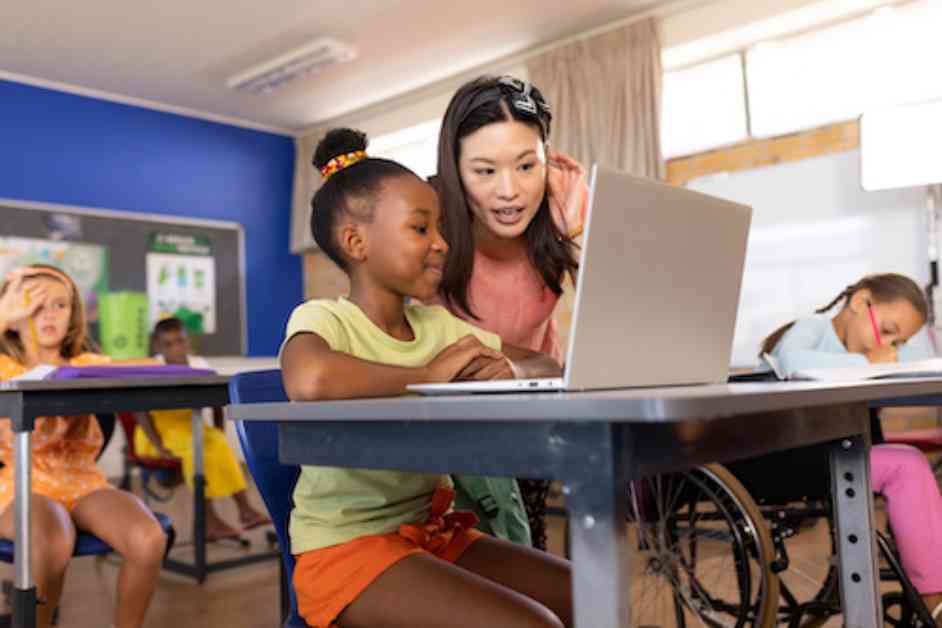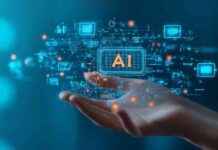7 Ways Artificial Intelligence Transforms Classroom Teaching
In the United States, the student to teacher ratio in classrooms can be quite high, with an average of 16 students per teacher and even reaching up to 23 students per teacher in states like California. Despite this longstanding ratio, teachers are facing increasing pressure and are putting in more hours each week, averaging between 52-58 hours. This scenario raises the question of how to address the root of the problem and what solutions can be implemented to support teachers in the classroom.
One of the challenges teachers encounter is the constant flux of curriculum changes and the push for standardization. While the intention behind delivering consistent content across classrooms is commendable, the high student to teacher ratios make it nearly impossible for teachers to provide personalized support to each student. Balancing the need to cover specific lesson targets throughout the school year with individual students’ struggles creates a dilemma for educators.
To meet curriculum requirements, teachers must maintain a pace that aligns with the lesson delivery goals set for the academic year. However, students often face difficulties with various topics and lessons, causing them to fall behind the class’s pace. Teachers find it challenging to adjust lesson plans for the entire class to cater to a few struggling students while also providing individual attention to those in need to stay on track.
Moreover, the lack of effective feedback mechanisms further compounds the issue, preventing teachers from quickly identifying struggling students and addressing the root causes of their challenges. Traditional tools like tests, quizzes, and homework serve as lagging indicators, making it challenging for educators to intervene promptly and provide necessary support. With more robust feedback mechanisms and enhanced support, teachers could adapt their lesson plans in real-time, offering timely assistance to students without disrupting the entire class’s progress.
Given the teacher shortage faced by many states, reducing class sizes or increasing support within classrooms may not be feasible solutions to the challenges teachers are grappling with. This is where generative AI, or GenAI, steps in to revolutionize the classroom environment.
AI in Education: A Game-Changer
Artificial Intelligence has been a topic of debate in education, with concerns about its role in academic assistance and answering questions. However, as AI technologies like ChatGPT have gained prominence, it has become evident that AI can be a valuable ally in enhancing both teachers’ and students’ educational experiences when utilized effectively.
In collaboration with teachers, we have identified six key areas where AI can significantly impact classroom teaching:
Data Analytics for Preventative Intervention: AI-powered data analytics can analyze students’ grades, attendance, participation, and behavioral indicators to identify those at risk of falling behind. By predicting potential academic challenges and learning disabilities, teachers can intervene early with tailored strategies to support students and prevent minor setbacks from escalating.
Improved Personalization, Collaboration, and Gamification: AI can customize learning experiences based on individual student needs, facilitate collaboration among students, and enhance engagement through gamification features. By tailoring learning experiences to match each student’s pace and preferences, AI can make education more personalized and enjoyable.
Immersive Scenario-Based Learning: AI can create interactive scenarios that immerse students in realistic environments to enhance comprehension and retention. Through simulated experiences, students can practice language skills, solve complex problems, or explore historical events, fostering hands-on learning and practical understanding.
Intelligent Tutoring Systems: AI-driven tutoring systems can offer personalized instruction tailored to each student’s learning style and pace. By adapting in real-time and providing challenges at the right level, these systems mimic the benefits of one-on-one tutoring and enhance learning outcomes.
Automated Grading and Feedback: AI-powered grading systems can streamline the evaluation process for teachers, providing personalized feedback to students and highlighting areas for improvement. Immediate feedback can aid in learning from mistakes and free up teachers to focus on in-class instruction and student support.
Virtual Assistants for Teachers: AI-powered virtual assistants can assist teachers with administrative tasks, lesson planning, and resource organization, allowing educators to dedicate more time to student engagement and professional development. By automating routine tasks, AI can enhance teacher efficiency and classroom management.
Each of these AI applications holds the potential to revolutionize teaching and learning experiences, making education more efficient, personalized, and accessible for students worldwide. However, the successful integration and adoption of these tools will depend on how effectively they are implemented in classrooms and embraced by educators.
The AI Revolution in Education: A Promising Future
The advent of AI in education marks the beginning of transformative changes that will reshape classroom dynamics and learning outcomes. While the impact of AI tools like paper.co is already being felt, the broader question remains: when will these technologies become ubiquitous in schools?
The accelerated pace of technological advancements and increased investment in ed-tech solutions indicate that AI’s integration into classrooms is imminent. The convergence of external factors, such as the COVID-19 pandemic, has propelled the discourse on technology’s role in education to the forefront, driving innovation and investment in ed-tech solutions.
Furthermore, the significant advancements in AI technology have made it more accessible and applicable to educational settings, paving the way for enhanced learning experiences and teacher support. The convergence of external interest, internal technological advancements, and growing awareness of AI’s potential in education sets the stage for a rapid transformation of classroom practices within the next 5-10 years.
Beyond the current applications of AI in education lies a broader impact on the educational landscape. AI’s evolution will prompt a reevaluation of traditional teaching methods and curricula, necessitating a shift towards preparing students for a future where AI plays a prominent role in various industries.
As AI continues to evolve and redefine job roles, education must adapt to equip students with the necessary skills and competencies for the workforce of tomorrow. This recalibration of educational priorities and objectives will be crucial in ensuring that students are prepared for the changing demands of the modern workforce.
Looking ahead, the integration of AI into education signals a paradigm shift in teaching practices and educational outcomes. By leveraging AI technologies effectively, educators can enhance teaching methodologies, personalize learning experiences, and empower students to reach their full potential. As AI continues to shape the future of education, it is essential to embrace these advancements and leverage them to create a more engaging, inclusive, and effective learning environment for students worldwide.
In conclusion, the intersection of AI and education holds immense promise for transforming classroom teaching and preparing students for a rapidly evolving world. By harnessing the power of AI technologies, educators can revolutionize teaching practices, enhance student engagement, and foster a culture of lifelong learning. The future of education is AI-driven, and the possibilities are endless for creating a dynamic and impactful learning experience for students of all ages.




